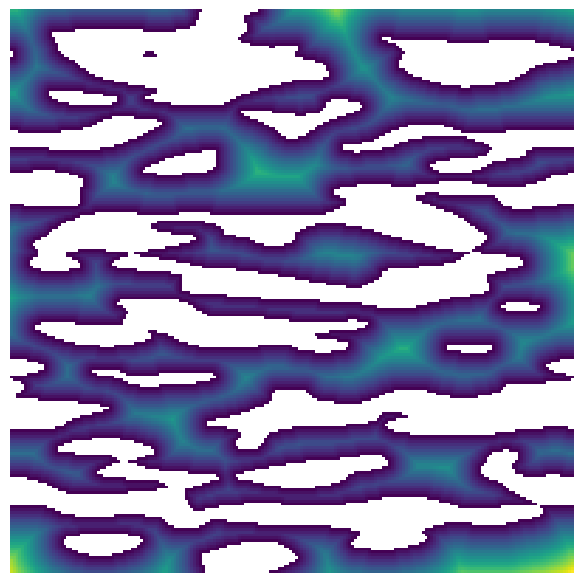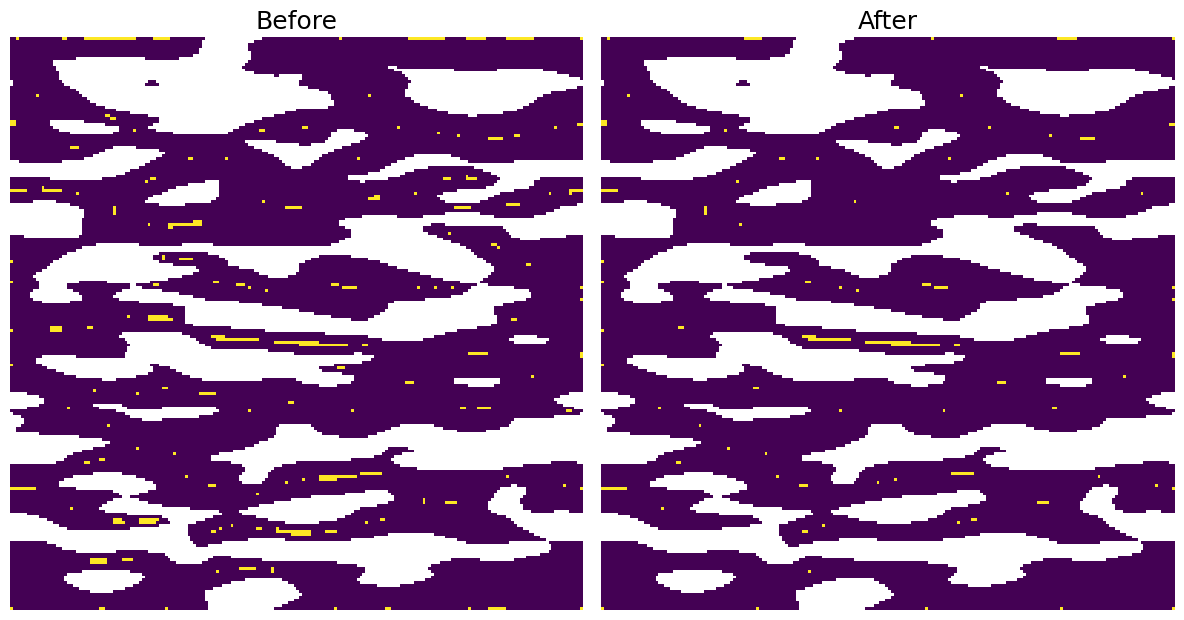trim_saddle_points#
trim_saddle_points function is a filter which removes peaks that were mistakenly identified because they lie on a saddle or a ridge in the distance transform.
import matplotlib.pyplot as plt
from edt import edt
import porespy as ps
ps.visualization.set_mpl_style()
dt#
The distance transform of a test image is detetmined using the edt method.
im = ps.generators.blobs(shape=[200, 200], blobiness=[2, 0.5], porosity=0.65)
dt = edt(im)
plt.figure(figsize=[6, 6])
plt.axis(False)
plt.imshow(dt / im);

peaks#
peaks is found using the find_peaks filter on the distance transform. Peaks that lie on a saddle or a ridge are removed.
peaks = ps.filters.find_peaks(dt, r_max=4)
x = ps.filters.trim_saddle_points(peaks=peaks, dt=dt)
fix, ax = plt.subplots(1, 2, figsize=[12, 12])
ax[0].axis(False)
ax[0].imshow(peaks / im)
ax[0].set_title("Before", fontdict={"fontsize": 18})
ax[1].axis(False)
ax[1].imshow(x / im)
ax[1].set_title("After", fontdict={"fontsize": 18});

